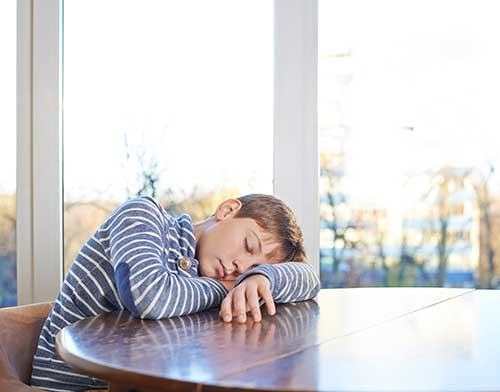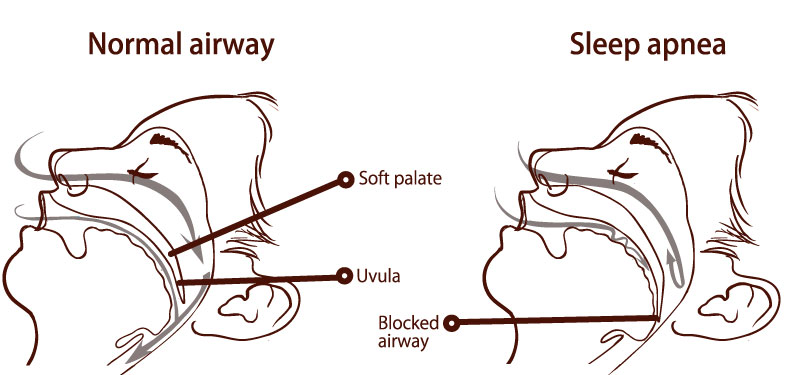
Sleep Apnea Treatment for Children in Redwood City
Have you ever heard your child snore? Have you been told by the daycare or school that your child is snoring at nap time? If your child snores, shows signs of restless sleep, or has been diagnosed with Attention-Deficit Hyperactivity Disorder (ADHD), they may be suffering from sleep apnea.
What Is Sleep Apnea?
Sleep apnea is usually characterized by an involuntary cessation of breathing that occurs while asleep. There are three types of sleep apnea: obstructive, central, and mixed. Of the three, obstructive sleep apnea, often called OSA for short, is the most common. Despite the difference in the root cause of each type, in all three, people with untreated sleep apnea stop breathing repeatedly during their sleep, sometimes hundreds of times during the night of varying lengths of time. Each time this deprives the body of oxygen, causing the cardiovascular system to react to maintain the necessary oxygen level to all the tissues of the body. As well as interrupting the continuity and restfulness of sleep. In most cases the sleeper is unaware of these breath stoppages because they don’t trigger a full awakening.
A full consultation with Dr Ken Holman will help you to see how you can better observe your child’s sleeping habits to catch any signs of sleep apnea. Some commons signs that your child may have a sleep-related breath disorder are:
- Snoring
- Pauses in breathing
- Chronic mouth breathing
- Constant tossing and turning
- Night panics
- Bed-wetting

Treating Sleep Apnea in Children
Various treatments are available for sleep apnea and can be very effective, depending on the cause. If your child’s sleep apnea is caused by enlarged tonsils and adenoids, they can be removed through surgery. Another solution is Continuous Positive Airway Pressure (CPAP) therapy. This involves the use of a machine that delivers mild air pressure through a mask that is worn while your child sleeps to keep the airway open.
Dentistry can also play an effective role in treatment. Depending on your child’s age, our experienced doctors can:
For Younger Children: For children who are still growing, the use of an orthodontic appliance called a palatal expander is a helpful and non-invasive treatment option. A palatal expander gently widens the roof of the mouth (palate) over time by separating bones of the upper jaw that don’t permanently fuse together until puberty. It’s used to treat a variety of orthodontic conditions, but by widening the roof of the mouth, we are able to increase the inside airway of the nose, significantly increasing nasal breathing. At the same time, we are creating more room for the tongue. This procedure can have significant benefits to children who are suffering from sleep apnea.
For Non-Growing Children: There are other variations of this treatment that can produce great improvement in the severity of sleep apnea or actually totally control the number of breathing events to those considered to be in the normal range.
For Adults: Oral Appliance Therapy (OAT) involves wearing a custom-made oral appliance designed to reposition the jaw during sleep so that the tongue is held away from the back of the throat, reducing the potential for obstruction, usually eliminating snoring and reducing the number of breathing events per hour, usually by a significant amount. This works best in patients who have just snoring, or patients with mild to moderate sleep apnea.
A Team Effort:
It’s important to know that the treatment of sleep apnea is a team effort that requires coordination between your doctor or pediatrician and a sleep physician as well as an orthodontist who is trained in sleep medicine. In our office, all of our patients are screened for sleep apnea as a routine part of our orthodontic examination or specifically when patients are referred to us for the treatment of sleep apnea. We have been including the treatment of sleep apnea in our practice for over 30 years. The information that has been presented above represents a good overview of what to look for and what some of the most common procedures are for treatment. When you come to our office, we will communicate our findings to your physician and help you find a sleep physician if you do not already have one, so that the most accurate diagnosis and treatment plan can be done for your or your child’s benefit. Once the diagnosis is made, the treatment decided upon will be made by the combined efforts of your doctors.

